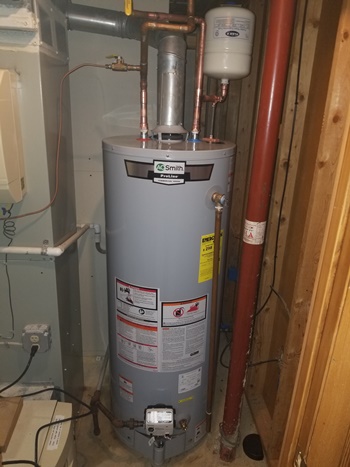How do you really feel in regards to Tips For Maintaining Your Hot Water Heater?

Hot water is important for day-to-day comfort, whether it's for a revitalizing shower or cleaning recipes. To ensure your warm water system runs effectively and lasts longer, normal maintenance is crucial. This article offers practical ideas and insights on just how to keep your home's hot water system to stay clear of interruptions and costly repair work.
Intro
Keeping your home's hot water system could seem overwhelming, but with a couple of simple actions, you can ensure it runs efficiently for years to come. This overview covers everything from comprehending your warm water system to DIY maintenance pointers and knowing when to contact specialist assistance.
Relevance of Preserving Your Hot Water System
Regular maintenance not only expands the lifespan of your warm water system yet also guarantees it operates successfully. Ignoring maintenance can cause decreased effectiveness, greater energy costs, and even early failure of the system.
Indications Your Warm Water System Needs Upkeep
Knowing when your warm water system requires attention can stop major problems. Look out for signs such as irregular water temperature, unusual sounds from the heater, or corroded water.
Understanding Your Hot Water System
Prior to diving into maintenance jobs, it's useful to recognize the basic elements of your warm water system. Generally, this consists of the hot water heater itself, pipes, anode rods, and temperature level controls.
Month-to-month Upkeep Tasks
Regular monthly checks can assist catch small issues prior to they rise.
Purging the Water Heater
Purging your hot water heater removes sediment build-up, improving efficiency and extending its life.
Checking and Replacing Anode Rods
Anode rods stop corrosion inside the tank. Checking and changing them when worn is crucial.
Examining and Adjusting Temperature Setups
Adjusting the temperature level settings guarantees ideal performance and security.
Do It Yourself Tips for Upkeep
You can carry out a number of maintenance jobs on your own to keep your hot water system in leading problem.
Checking for Leakages
Consistently examine pipes and links for leaks, as these can result in water damage and greater costs.
Checking Stress Relief Valves
Evaluating the pressure relief valve ensures it works correctly and stops extreme pressure buildup.
Insulating Pipelines
Protecting warm water pipelines decreases heat loss and can conserve energy.
When to Call a Specialist
While DIY upkeep is valuable, some concerns need professional proficiency.
Facility Problems Calling For Professional Aid
Instances include significant leaks, electric problems, or if your hot water heater is consistently underperforming.
Routine Specialist Maintenance Benefits
Expert maintenance can consist of comprehensive inspections, tune-ups, and making certain conformity with security standards.
Final thought
Normal maintenance of your home's warm water system is essential for effectiveness, long life, and cost savings. By adhering to these suggestions and understanding when to look for specialist help, you can ensure a trustworthy supply of hot water without unexpected disruptions.
Water Heater Maintenance Tips
Test the TPR Valve
Shut off the power and the cold-water supply valve. Place a bucket under the pipe connected to the temperature-pressure-release (TPR) valve on the top or side of the tank. (This valve opens if the tank pressure gets too high.) Lift the valve’s tab to let some water out, then let go. If water keeps flowing, drain the tank partway, unscrew the old valve with a pipe wrench, and install a new one. Check the Anode Rod
Put a hose to the tank’s drain cock and let out a few gallons of water. Now fit a 1 1/16-inch socket onto the rod’s hex head on top of the heater (or under its top plate) and unscrew the rod. If it’s less than ½ inch thick or coated with calcium, buy a new one, wrap its threads with Teflon tape, put it back in the tank, and tighten securely. Use this segmented rod if headroom above the tank is limited. Drain the Tank and Wash Out Sediment
Drain the remaining water in the tank into the bucket, then stir up the sediment on the tank’s bottom by briefly opening the cold-water supply valve. Drain and repeat until clean water comes out of the hose. Close the drain cock, refill the tank, and turn its power back on. Adjust the Temperature
Find the temperature dial on the side of the tank and unscrew its cover. Adjust the dial to 120 degrees using a flathead screwdriver. For every 10 degrees the temperature is lowered, you can expect to save up to 5 percent in energy costs. Turn the water heater off or the thermostat down to its lowest setting if you plan to be away from home for more than three days. Insulate the Pipes
Buy some self-sticking 3/8-inch-thick foam pipe insulation that matches the pipes’ diameter. Slide the foam over the hot-and cold-water pipes as far as you can reach. Insulating the cold-water pipe prevents condensation in summer. Peel the tape and squeeze the insulation closed. If the pipe is 6 inches or less from the flue, cover it with 1-inch-thick unfaced fiberglass pipe wrap. https://www.thisoldhouse.com/plumbing/21016402/how-to-maintain-a-water-heater

As a devoted reader about How to Maintain Your Water Heater & Prolong its Life, I think sharing that article post was a smart idea. Sharing is nice. Helping people is fun. Thanks a bunch for being here. Please stop by our blog back soon.
Check This Out